Discover the Himalayan paradise of Nepal, a premier destination for trekkers around the globe, with its 5 Best Beginner Treks that serve as the perfect introduction to the wonders of high-altitude hiking. These treks, including the renowned Poon Hill Trek, the culturally rich Langtang Valley Trek, the picturesque Mardi Himal Trek, the accessible Helambu Trek, and the breathtaking Pikey Peak Trek, offer a blend of stunning landscapes, vibrant cultures, and gentle trails suited for novice hikers. Each trek promises an unforgettable journey through the heart of Nepal's majestic mountains, providing beginner trekkers with a safe, enjoyable, and immersive experience in the great outdoors. Whether you're seeking panoramic mountain views, cultural encounters, or serene nature trails, these treks are your gateway to the Himalayan adventure of a lifetime.
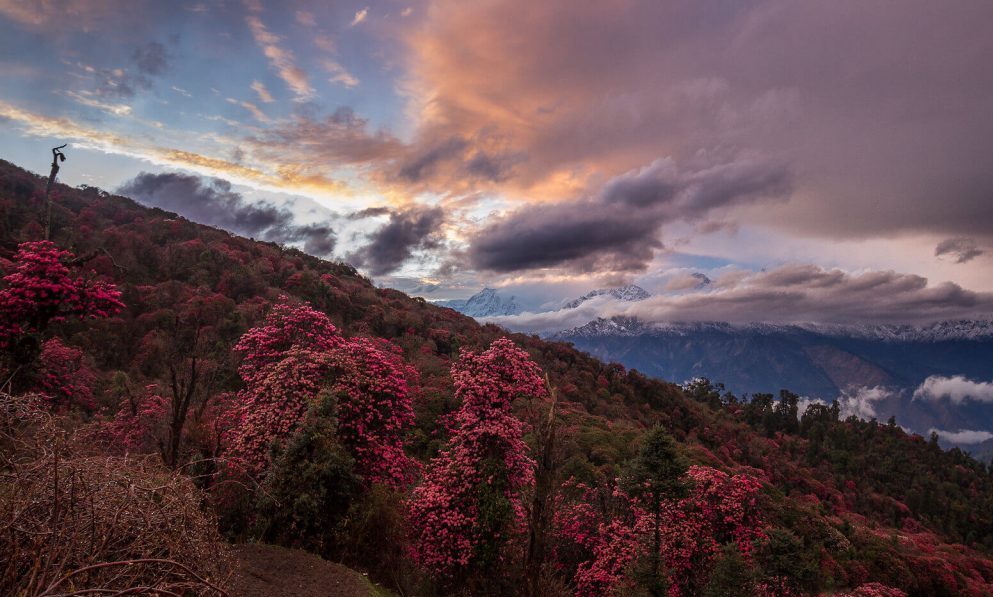
At Luxury Holiday Nepal, we pride ourselves on being the go-to company for beginners eager to explore the Himalayas through our curated 5 Best Beginner Treks in Nepal. Our expertise lies in offering well-organized, safe, and enriching trekking experiences. With a focus on immersive cultural experiences, breathtaking landscapes, and comprehensive support, we ensure every trekker enjoys the beauty of Nepal's majestic trails comfortably and safely. Our dedicated team of guides and staff are committed to making your Himalayan adventure memorable, guiding you through every step of your journey with local insights and expert care.
Ghorepani Poonhill Trek
The Ghorepani Poon Hill Trek is one of Nepal's most popular and accessible treks, ideal for beginners and those short on time but eager to experience the beauty of the Annapurna region. This trek offers a splendid introduction to the joys of Himalayan hiking, featuring stunning mountain views, rich cultural experiences, and the famous Poon Hill sunrise, which presents a breathtaking panorama of the Annapurna and Dhaulagiri ranges.
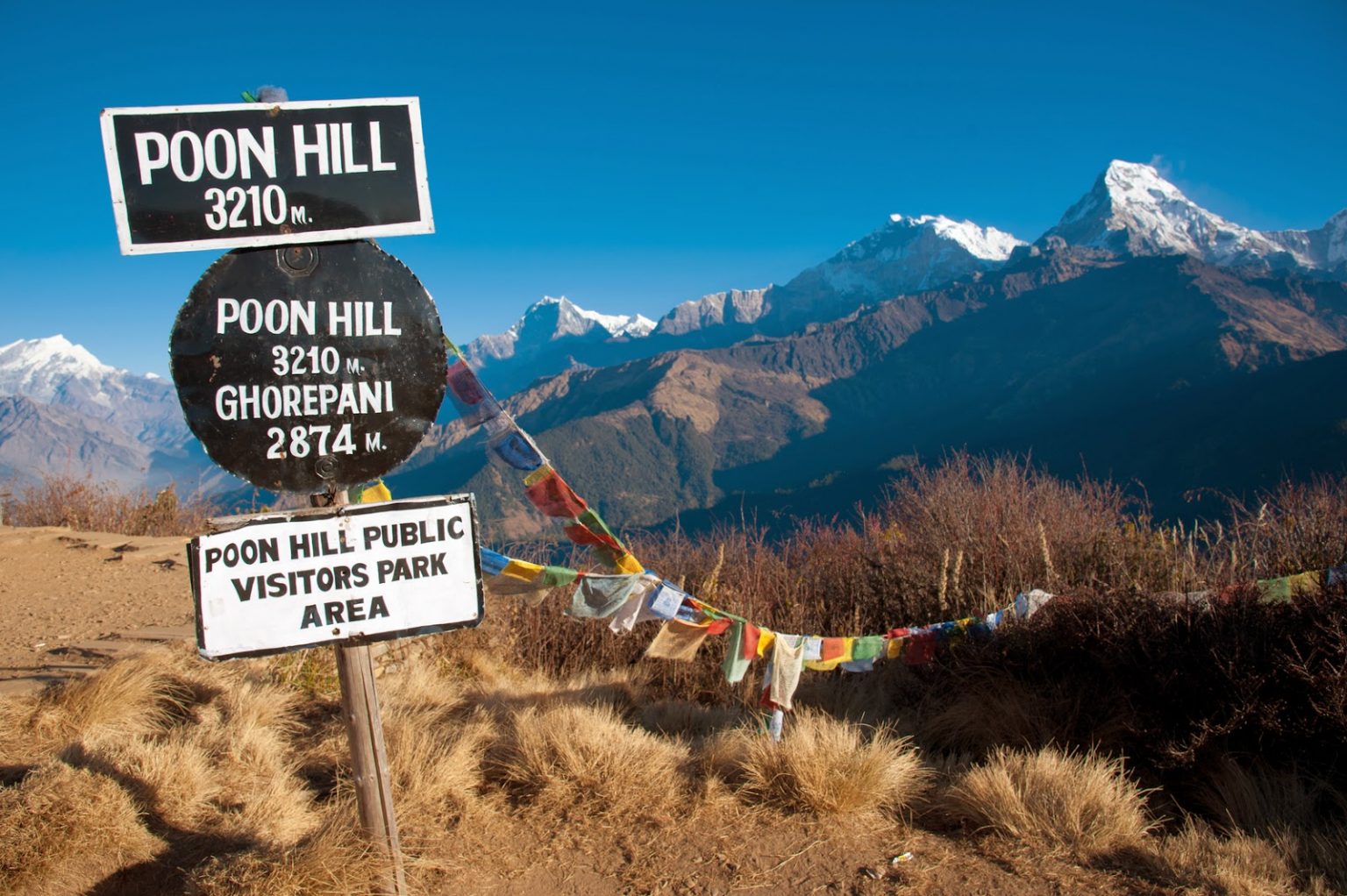
Highlights of the Ghorepani Poon Hill Trek:
- Poon Hill Sunrise: The climax of the trek is the early morning hike to Poon Hill (3,210 meters), where trekkers are rewarded with one of the most celebrated sunrise views over the Himalayas, including Annapurna South, Annapurna I, Dhaulagiri, and Machhapuchhre (Fishtail Mountain).
- Rhododendron Forests: The trail winds through beautiful forests of Rhododendron, Nepal’s national flower, offering a riot of color in spring when the flowers are in full bloom.
- Cultural Insights: The trek passes through charming Gurung and Magar villages, such as Ghorepani and Ghandruk, providing insights into the lifestyles and traditions of the local communities in the Annapurna region.
- Accessible Adventure: Starting and ending in Pokhara, Nepal’s adventure hub, the trek typically spans 4 to 5 days, making it an excellent option for trekkers looking for a shorter Himalayan adventure.
- Stunning Landscapes: Apart from the majestic peaks, trekkers enjoy diverse landscapes, including terraced fields, dense forests, and alpine meadows, showcasing the natural beauty of Nepal.
Ideal Time to Trek: The best times to embark on the Ghorepani Poon Hill Trek are during the spring (March to May) and autumn (September to November) seasons. These periods offer the clearest skies, moderate weather, and the best visibility, with the added beauty of rhododendrons blooming in spring.
Difficulty Level: The trek is considered easy to moderate, making it suitable for beginners and those not accustomed to high-altitude hiking. The trails are well-trodden and not particularly strenuous, though some uphill walking is required to reach Poon Hill.
Accommodations: The trek is facilitated by a network of teahouses offering basic but comfortable lodging and traditional Nepali meals. This teahouse trekking allows for a lighter pack and a deeper connection with local culture.
The Ghorepani Poon Hill Trek stands out as a perfect blend of natural beauty, cultural richness, and physical accessibility, making it an ideal choice for first-time trekkers in Nepal or those seeking a shorter trekking experience in the Himalayas.
Langtang Valley Trek
The Langtang Valley Trek is a mesmerizing journey into the heart of the Himalayas, offering trekkers a blend of natural beauty, cultural richness, and relatively easy access compared to other Himalayan treks. It's an ideal adventure for beginners keen on experiencing the enchanting landscapes and vibrant cultures within the Langtang National Park, located close to Kathmandu. This trek not only showcases the stunning vistas of snow-capped peaks but also provides a glimpse into the life of the local Tamang and Sherpa communities, whose traditions and practices have been preserved over centuries.
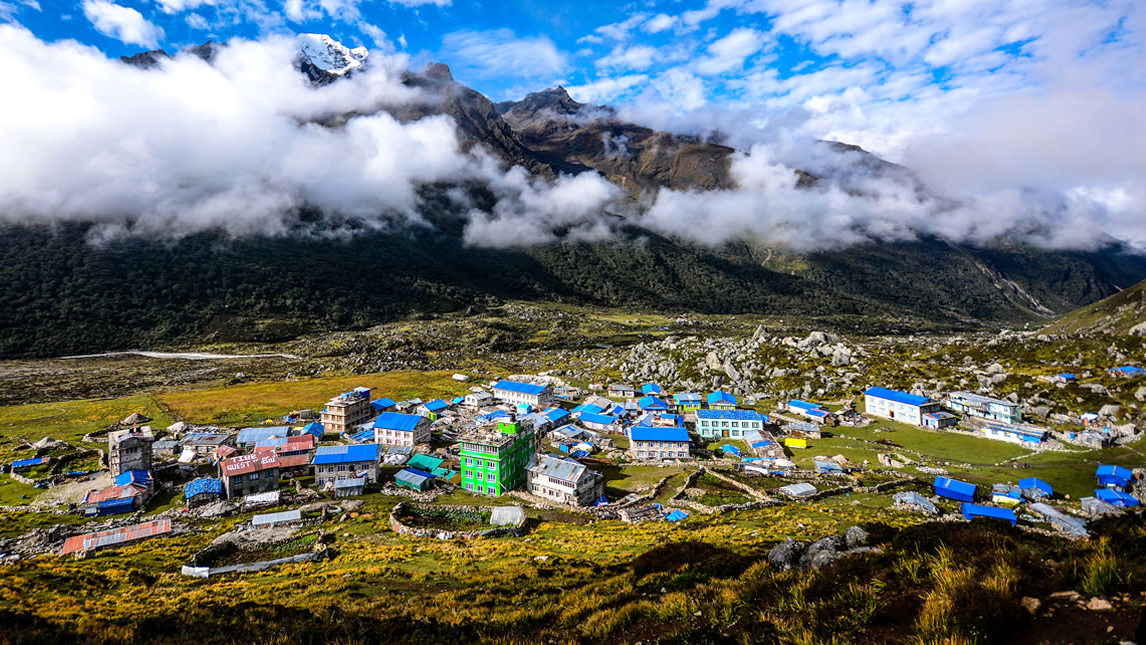
Highlights of the Langtang Valley Trek:
- Spectacular Mountain Views: The trek offers breathtaking views of Langtang Lirung (7,234 meters), Langtang Ri, Lakpha Dorje, Kimshung, and Ganesh Himal, among others. The scenery includes vast open valleys, majestic waterfalls, and serene lakes.
- Rich Cultural Experience: Trekkers get to experience the unique culture of the Tamang people, closely related to Tibetan culture. The valley is dotted with ancient monasteries, chortens, and prayer wheels, adding a spiritual dimension to the trek.
- Varied Landscapes: The trail passes through diverse terrains, from lush forests of rhododendron and bamboo to alpine meadows and glaciers at higher altitudes. The trek also includes a walk through Langtang National Park, home to various wildlife including the rare red panda.
- Kyanging Gompa: The trek reaches its highest point in the village of Kyangjin Gompa (3,870 meters), where trekkers can visit the local monastery and a cheese factory, offering insights into local livelihoods alongside panoramic mountain views.
- Accessibility: Starting just a day’s drive from Kathmandu, the Langtang Valley Trek is easily accessible, making it an excellent option for those with limited time but a strong desire to experience Himalayan trekking.
Ideal Time to Trek: The best seasons for the Langtang Valley Trek are during the spring (March to May) and autumn (September to November). These months offer the clearest skies, the most pleasant weather, and the best views. Spring also features blooming flowers, adding vibrant colors to the trek.
Difficulty Level: The trek is considered to have a moderate difficulty level. It involves walking for several days, but the altitude gain is gradual, making it a feasible challenge for beginners or those with moderate fitness levels. The highest point of the trek, Kyangjin Gompa, is situated at 3,870 meters, which is manageable for most trekkers with proper acclimatization.
Accommodations: The Langtang Valley Trek is facilitated by a series of teahouses along the route, offering trekkers comfortable lodgings and traditional Nepali meals. This teahouse trekking allows for a lighter pack and a more immersive experience in the local culture.
The Langtang Valley Trek is a captivating journey that balances natural splendor with cultural depth, making it an unforgettable experience for those new to Himalayan trekking. It's a trek that promises adventure, solitude, and a profound connection with the natural world, all within a relatively short distance from Nepal's capital.
Mardi Himal Trek
The Mardi Himal Trek is a relatively new and less trodden path in the Annapurna region of Nepal, quickly gaining popularity among trekkers for its pristine beauty, serene trails, and spectacular close-up views of the Annapurna range. Ideal for beginners and those seeking a quieter alternative to the more crowded treks, the Mardi Himal Trek offers a unique and intimate experience of the Himalayas. This trek provides a perfect blend of cultural insights, natural beauty, and physical challenge, making it an excellent choice for adventurers looking to immerse themselves in the tranquility of the mountains.
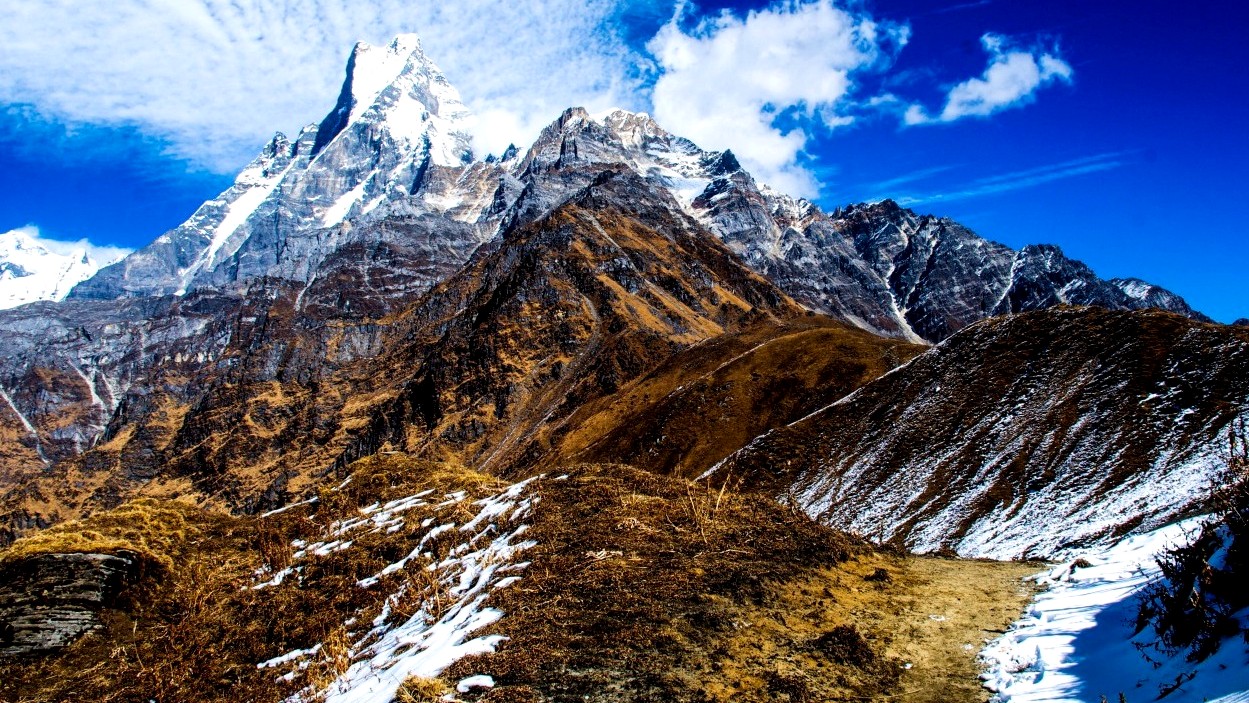
Highlights of the Mardi Himal Trek:
- Spectacular Mountain Views: The trek offers incredible views of Mardi Himal, Machapuchare (Fishtail), Annapurna South, and Hiunchuli. The viewpoint from Mardi Himal Base Camp presents trekkers with breathtaking, up-close views of these majestic peaks.
- Off-the-Beaten-Path Experience: With fewer trekkers on the trail compared to the more famous Annapurna Circuit or Base Camp treks, Mardi Himal provides a peaceful trekking experience, allowing for a more personal connection with nature.
- Diverse Terrain: The trail winds through lush rhododendron forests, alpine meadows, and high ridges, offering varied landscapes and the opportunity to witness the rich biodiversity of the Annapurna Conservation Area.
- Cultural Experience: The trek passes through traditional Gurung and Magar villages, where trekkers can experience the warm hospitality of the local communities and learn about their cultures and lifestyles.
- Short Duration: The Mardi Himal Trek can be completed in 4-7 days, making it an ideal option for those with limited time but a desire to experience high-altitude trekking in the Himalayas.
Ideal Time to Trek: The best seasons for the Mardi Himal Trek are during the spring (March to May) and autumn (September to November). These months offer the clearest skies, the most favorable weather conditions, and the best visibility for mountain views. Spring also features the blooming of rhododendrons and other wildflowers, adding extra beauty to the trek.
Difficulty Level: The trek is considered moderate in difficulty. While it does not require prior high-altitude trekking experience, a good level of physical fitness is recommended due to the steep and rugged terrain in some sections, as well as the higher altitudes reached during the trek.
Accommodations: The trek is facilitated by a series of teahouses along the route, offering basic but comfortable lodging and traditional Nepali meals. This teahouse trekking setup allows trekkers to travel light and enjoy the hospitality of the local people.
The Mardi Himal Trek is a remarkable journey through one of the most beautiful and serene landscapes in the Annapurna region. It stands out for its stunning mountain views, rich cultural encounters, and the opportunity to trek on a less crowded path, offering a unique and memorable experience in the Himalayas.
Pikey Peak Trek
The Pikey Peak Trek is a hidden gem among the trekking routes in Nepal, offering some of the most spectacular views of the Everest range along with a profound cultural experience. This trek is particularly suited for those seeking a less crowded path and an opportunity to immerse themselves deeply in the natural beauty and local Sherpa culture of the Solu Khumbu region. The trek to Pikey Peak is an excellent choice for beginners and those interested in experiencing the majesty of the Himalayas without the technical challenges or the time commitment required by more strenuous treks.
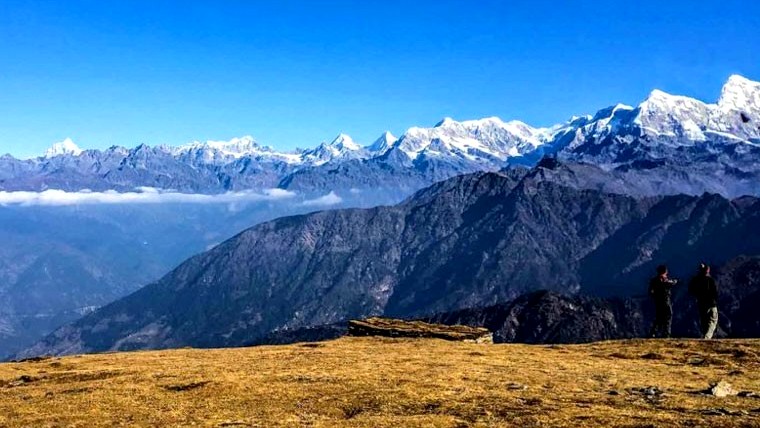
Highlights of the Pikey Peak Trek:
- Breathtaking Mountain Views: Pikey Peak (4,065 meters) provides one of the best panoramas of the Himalayan range, including Mount Everest, Lhotse, Makalu, and Annapurna, among others. The sunrise and sunset views from the summit are particularly spectacular, with the mountains glowing in the golden light.
- Rich Cultural Experience: The trek passes through traditional Sherpa and Tamang villages, offering insights into their lifestyles, cultures, and traditions. Trekkers have the opportunity to visit ancient monasteries and stupas, including the Thupten Choling Monastery, which enriches the spiritual experience of the journey.
- Diverse Flora and Fauna: The trail winds through rhododendron forests, bamboo groves, and pine forests, hosting a variety of bird species and wildflowers, especially vibrant during the spring season.
- Less Crowded Trails: Compared to more popular treks in the Everest region, the Pikey Peak Trek offers a peaceful and solitary experience, allowing trekkers to enjoy the natural beauty and tranquility of the mountains without the crowds.
- Accessibility and Short Duration: The trek can be completed in about 5 to 7 days, making it an ideal option for those with limited time. It starts after a drive from Kathmandu to Dhap or Phaplu and ends in the same region, providing easy access to and from the capital.
Ideal Time to Trek: The best times to undertake the Pikey Peak Trek are during the spring (March to May) and autumn (September to November) seasons. These periods offer clear skies, favorable weather, and the most stunning views of the Himalayan peaks. Spring also features blooming rhododendrons and other wildflowers, adding a splash of color to the trek.
Difficulty Level: The trek is considered to be of moderate difficulty. It involves daily walks of 5 to 7 hours on average, with some steep climbs, particularly as you approach Pikey Peak. However, the gradual ascent and well-defined trails make it accessible for beginners with a good level of fitness.
Accommodations: The Pikey Peak Trek is facilitated by basic teahouses and lodges along the route, offering a comfortable and authentic experience of local hospitality. These accommodations provide a place to rest, dine, and interact with fellow trekkers and locals alike.
The Pikey Peak Trek is a rewarding journey that not only showcases the natural splendor of the Everest region but also offers a deep dive into the rich cultural heritage of the local Sherpa communities. It's an ideal trek for those looking to explore off-the-beaten-path trails and enjoy some of the best views the Himalayas have to offer.
Helambu Trek
The Helambu Trek is a delightful journey ideal for those looking to experience the beauty and culture of the Himalayas over a short period. Located conveniently close to Kathmandu, this trek offers a serene and less crowded alternative to the more popular routes. Its accessibility, combined with the richness of cultural experiences and the beauty of the landscapes, makes the Helambu Trek an excellent choice for beginners and those with limited time.
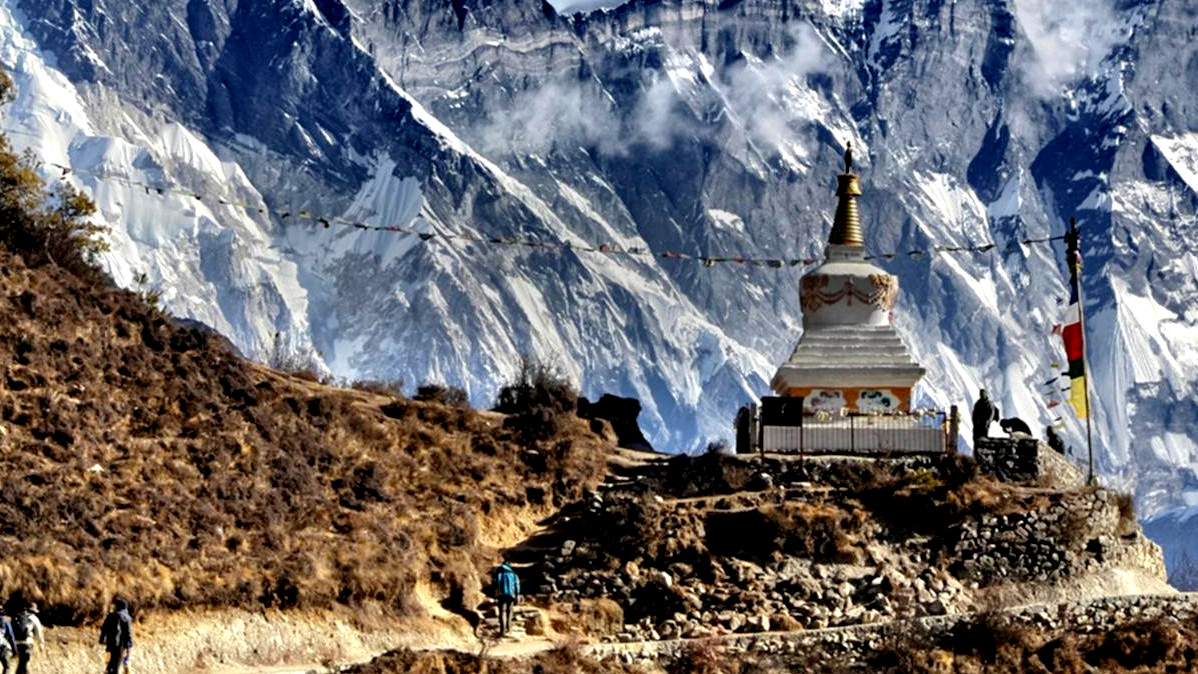
Highlights of the Helambu Trek:
- Cultural Richness: The trek traverses through the Helambu region, home to the Hyolmo people. Their unique culture, traditions, and the warm hospitality of the local communities enrich the trekking experience.
- Scenic Beauty: The route offers stunning views of the Langtang Himalayas, lush valleys, and dense forests of rhododendron and bamboo. The landscape is dotted with beautiful waterfalls and streams, adding to the trek's scenic charm.
- Convenience and Accessibility: Starting just a short drive from Kathmandu, the Helambu Trek is highly accessible. Its proximity allows trekkers to immerse themselves in the Himalayan experience without the need for extensive travel.
- Lower Altitude: The trek remains at relatively low altitudes, reducing the risk of altitude sickness and making it suitable for trekkers of all ages and fitness levels.
- Monasteries and Chortens: The path is sprinkled with Buddhist monasteries, chortens, and prayer flags, offering a glimpse into the spiritual life of the local communities. The Tarkeghyang and Sermathang villages are notable for their cultural heritage and friendly inhabitants.
Ideal Time to Trek: The Helambu Trek can be undertaken year-round, but the best times are during the spring (March to May) and autumn (September to November) seasons. These months feature clear skies, moderate temperatures, and the best views of the mountains. Spring also brings the added beauty of blooming rhododendrons and other wildflowers.
Difficulty Level: The trek is considered easy to moderate, making it an appealing option for beginners or those looking for a less strenuous trekking experience. The trails are well-marked and pass through varied terrain, from flatlands to gentle slopes.
Accommodations: The trek offers a range of accommodations, from comfortable teahouses to homestays, allowing trekkers to experience local hospitality and cuisine. These lodgings provide a cozy and authentic stay in the mountains.
The Helambu Trek stands out for its cultural insights, scenic landscapes, and ease of access, offering a fulfilling Himalayan trekking experience without the challenges of higher altitudes or longer durations. It's a journey that combines natural beauty with cultural immersion, making it an ideal trek for those looking to explore the Himalayas over a short period.
Tips and Preparation for Beginner Treks in Nepal
Trek in Nepal is an adventure that promises breathtaking landscapes, rich cultural experiences, and the challenge of traversing some of the world's most beautiful trails. For beginners, preparation is key to ensuring a successful and enjoyable trek. Here are essential tips and guidelines to prepare for beginner treks in Nepal:
1. Physical Preparation
- Start Training Early: Begin a fitness regimen at least two months before your trek. Focus on cardiovascular exercises like walking, running, cycling, and swimming to build stamina. Include hikes on varied terrain in your training to get used to walking on slopes.
- Strength Training: Incorporate strength training exercises for your legs, back, and core to improve endurance and stability on the trails.
2. Mental Preparation
- Set Realistic Expectations: Understand the physical and mental challenges you may face, such as altitude, rugged terrain, and basic living conditions.
- Familiarize Yourself with the Trek: Research your chosen trek's difficulty, altitude, and typical day-to-day itinerary to mentally prepare for what's ahead.
3. Choosing the Right Gear
- Invest in Good Quality Footwear: Comfortable, durable, and waterproof hiking boots are crucial. Break them in well before your trek to avoid blisters.
- Layered Clothing: Pack breathable and moisture-wicking base layers, insulating layers, and a waterproof outer layer to adapt to the varying temperatures.
- Essentials: Don’t forget a good quality backpack, sleeping bag (if needed), sunglasses, sunscreen, a hat, and gloves.
4. Acclimatization and Altitude Sickness
- Understand Altitude Sickness: Learn about the symptoms of altitude sickness and how to prevent it, such as by ascending slowly, staying hydrated, and avoiding alcohol and tobacco.
- Plan for Acclimatization: Choose treks that incorporate days for acclimatization and have a flexible schedule to allow for extra rest days if needed.
5. Travel Insurance
- Get Adequate Coverage: Ensure your travel insurance covers high-altitude trekking (up to the maximum altitude you plan to reach) and includes medical evacuation and repatriation.
6. Hiring Guides and Porters
- Consider Professional Assistance: Even on beginner treks, hiring a local guide can enhance your experience and provide valuable insights into the culture and environment. Porters can also ease the physical strain by carrying your main bag.
7. Health and Hygiene
- Prepare a First-Aid Kit: Pack a basic first-aid kit with essentials like bandages, antiseptic wipes, blister plasters, and personal medications.
- Water Purification: Carry water purification tablets or a water filter to ensure you have access to safe drinking water.
8. Respect Local Customs and Environment
- Cultural Sensitivity: Learn about and respect the local customs, traditions, and religious beliefs. Dress modestly and ask permission before taking photos of people.
- Leave No Trace: Pack out all your trash, stay on designated trails, and support eco-friendly lodges and services.
9. Documentation
- Keep Important Documents Handy: Ensure you have your passport, necessary visas, trekking permits (like TIMS card and National Park permits), and insurance details easily accessible.
10. Stay Flexible
- Be Prepared for Changes: Weather conditions, health issues, or other unforeseen circumstances may require changes to your itinerary. A flexible attitude will help you manage any challenges that arise.
By thoroughly preparing and understanding what to expect, you can make your first trekking experience in Nepal a memorable adventure. Embrace the journey with an open heart and a prepared mind to fully enjoy the natural beauty and cultural richness that Nepal has to offer.
Preparing for beginner treks in Nepal, such as those offered by Luxury Holidays Nepal, involves a mix of physical conditioning, mental readiness, appropriate gear selection, and an understanding of the challenges of high-altitude hiking. Whether you're drawn to the serene trails of the Helambu Trek, the majestic views from Poon Hill, or the untouched beauty of the Mardi Himal Trek, ensuring you are well-prepared will greatly enhance your trekking experience. Luxury Holidays Nepal, with its expertise in crafting tailor-made trekking adventures, stands ready to guide you through these mesmerizing landscapes, ensuring a journey that's not only enjoyable but also infused with the rich cultural tapestry of Nepal. With the right preparation and a reliable partner like Luxury Holidays Nepal, your trek in the Himalayas is set to be an unforgettable adventure.